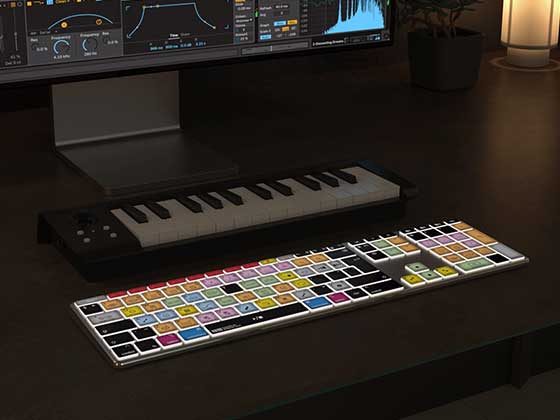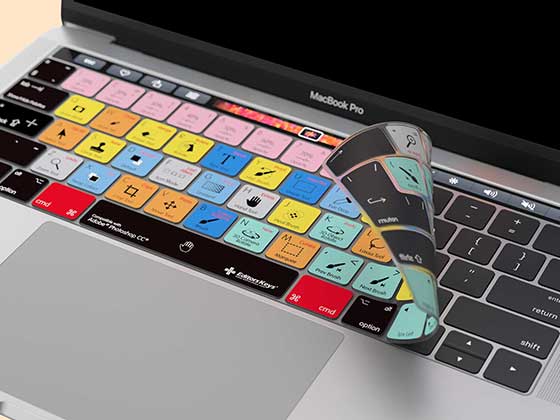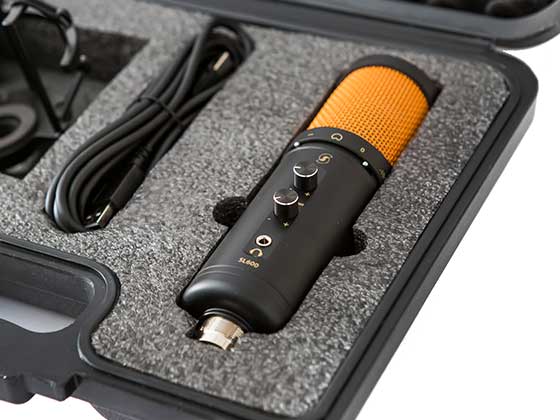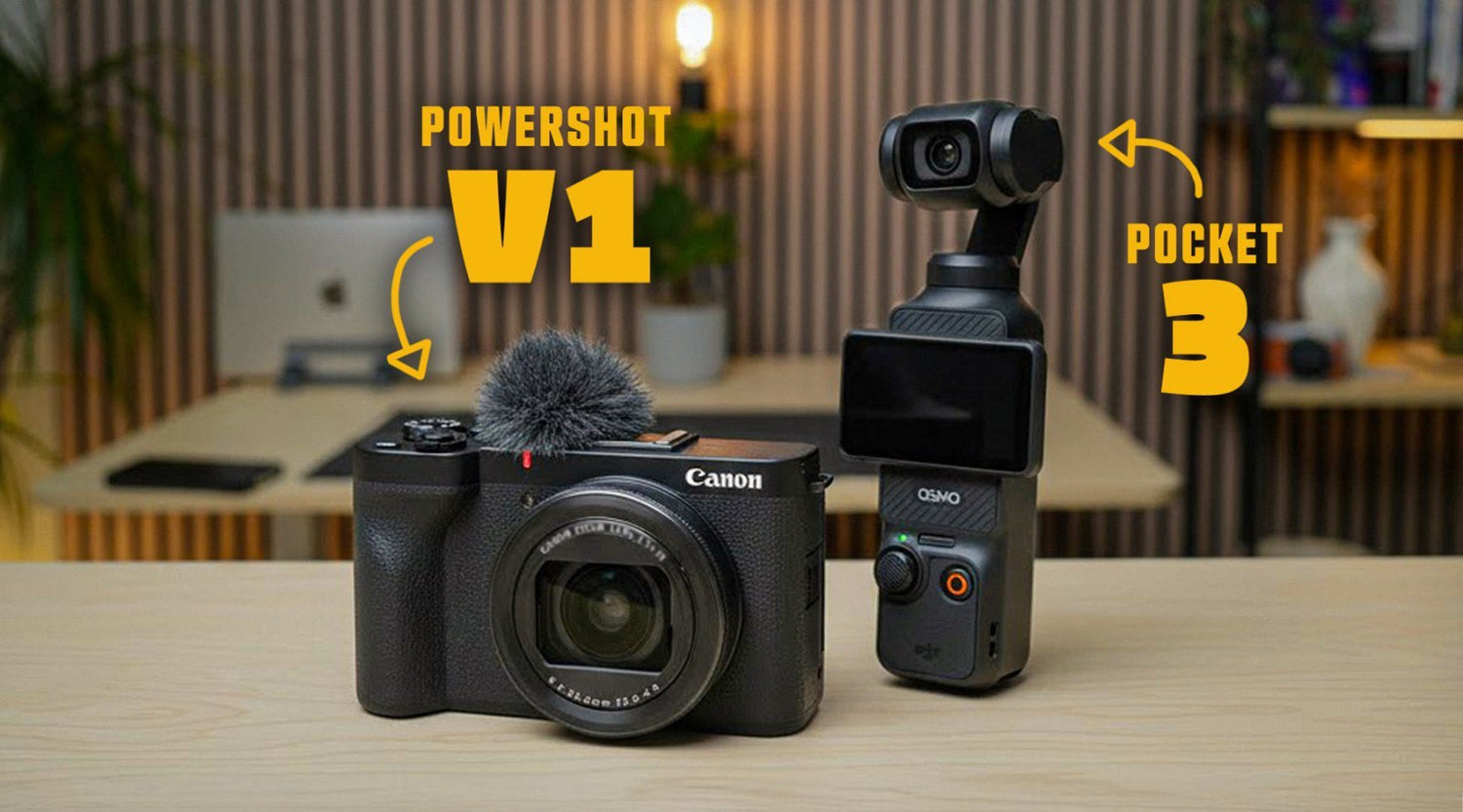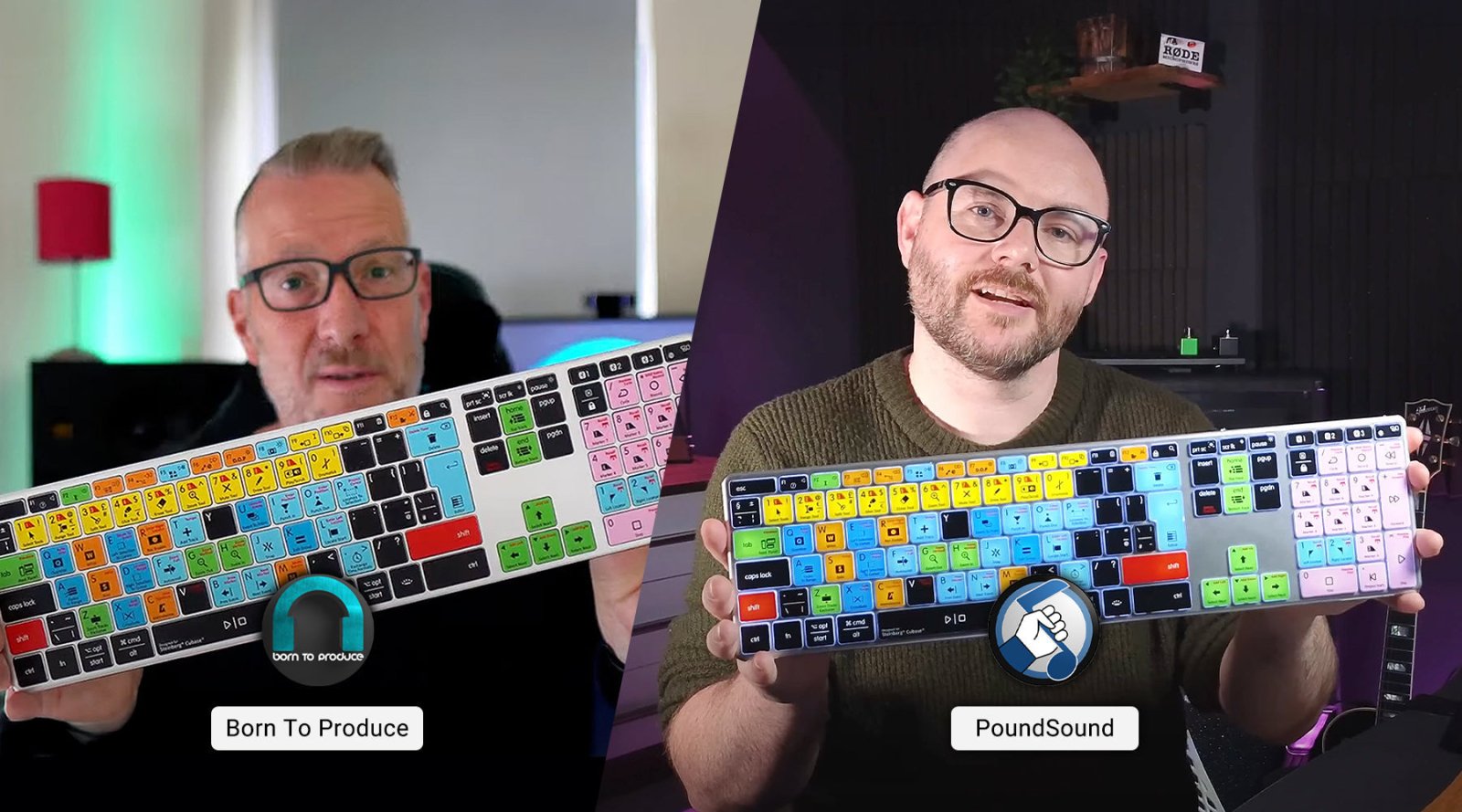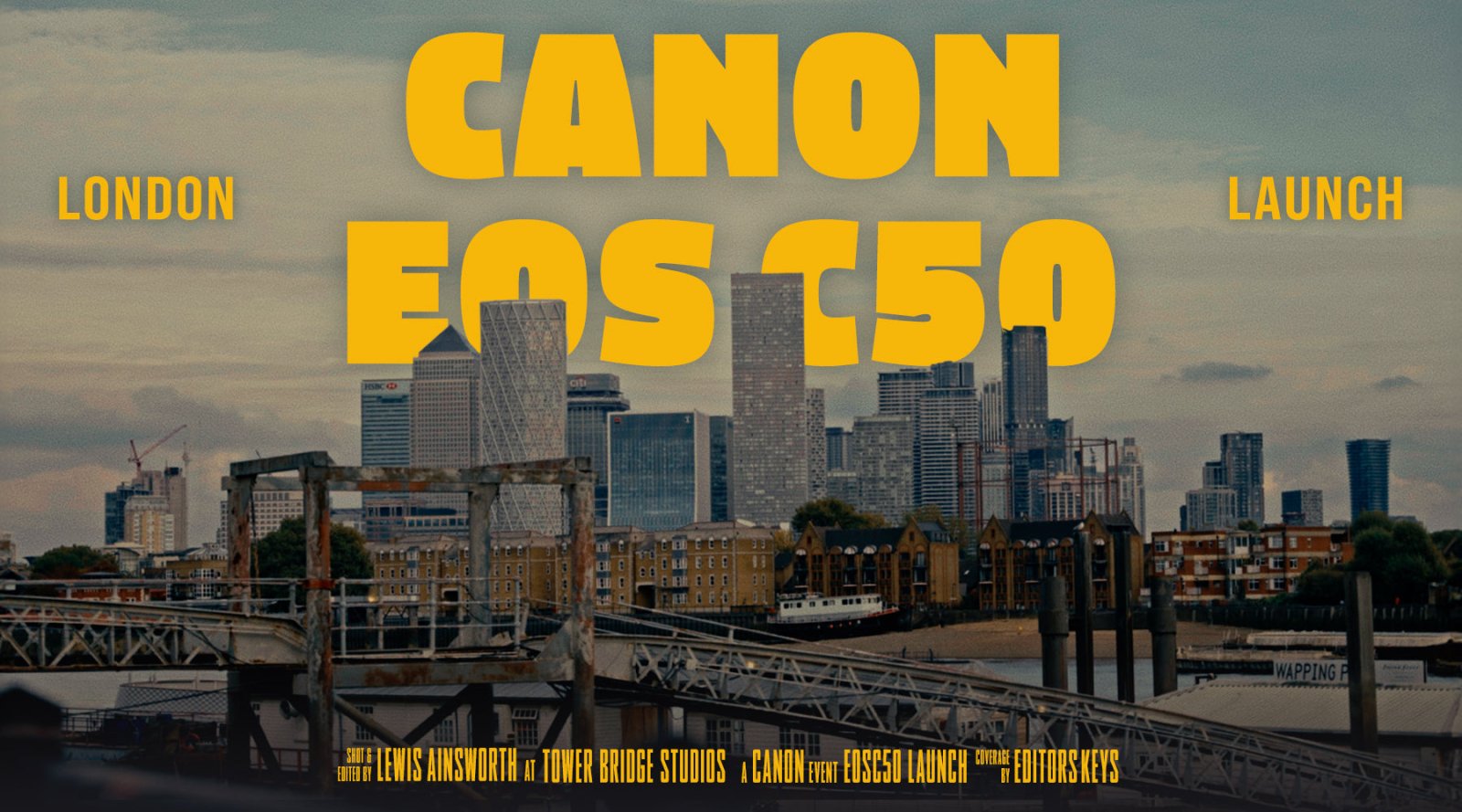If you’re just getting started with content creation, vlogging, or filmmaking, you’ve probably seen the DJI Pocket 3 and the Canon PowerShot V1 popping up all over YouTube. Both are compact, creator-focused cameras designed to make high-quality video easier than ever — but which one is the right fit for you?
In this post, we’ll compare the two cameras across all the key areas — image quality, stabilisation, audio, ease of use, and value for money — to help you decide which camera deserves a place in your kit bag.

1. Image Quality: Sensor Size and Look
When it comes to image quality, sensor size matters. The Canon PowerShot V1 has a larger 1.4-inch sensor, compared to the DJI Pocket 3’s 1-inch sensor.
That extra surface area lets the Canon capture more light and detail, resulting in a slightly more cinematic and film-like image.
The DJI Pocket 3 still produces excellent results — bright, crisp and well-exposed footage — but the look leans a touch more digital.
If you’re aiming for that dreamy, soft, filmic look straight out of camera, the Canon takes the edge.
2. Stabilisation: The Pocket 3 Wins Hands-Down
Stabilisation is where the DJI Pocket 3 truly shines. With its built-in 3-axis mechanical gimbal, the Pocket 3 produces silky-smooth footage even when you’re walking, panning or vlogging on the move.
You don’t have to think about “ninja-walking” or carrying extra gear — just point, walk, and shoot.
By contrast, the Canon PowerShot V1 does have digital and optical image stabilisation, but it can’t quite match the effortless stability of a gimbal. You’ll see minor corner jitters or shakes if you’re filming handheld.
So, for walk-and-talk content, travel vlogs or run-and-gun shooting, the DJI Pocket 3 is the clear winner.
3. Audio: Built-In Mic vs Wireless Freedom
Good audio can make or break your content, and both cameras deliver impressive performance for their size.
The Canon PowerShot V1 arguably has one of the best built-in microphones found on a compact camera, producing natural, clear sound right out of the box.
However, the DJI Pocket 3 pulls ahead for wireless mic integration. The Creator Combo includes a DJI wireless mic and the camera has a built-in receiver, meaning you don’t need to attach bulky adapters or extra cables.
You can simply clip the mic to your shirt and start recording crisp, broadcast-quality sound.
If you prefer simple, high-quality in-camera audio — go Canon.
If you want flexible, cable-free recording with professional results — the DJI Pocket 3 wins again.

4. Zoom Range and Lens Flexibility
Here, the Canon PowerShot V1 easily takes the crown.
It features a true optical zoom lens (equivalent to around 18–50 mm), allowing you to both capture wide shots and punch in on distant subjects without losing detail. That makes it ideal for travel, product filming, or hybrid creators who want to shoot both video and stills.
The Pocket 3, meanwhile, offers only digital zoom, which crops the image rather than optically magnifying it. It’s fine for casual use, but you’ll lose a bit of sharpness.
So, for versatile framing and optical flexibility, the PowerShot V1 comes out on top.
5. Ease of Use and Portability
When it comes to simplicity, the DJI Pocket 3 is unbeatable.
It’s small enough to slip into your pocket, boots up in seconds, and its intuitive touchscreen controls make shooting effortless.
DJI has clearly designed the Pocket 3 for creators who want to focus on content, not camera settings.
The Canon PowerShot V1, while user-friendly, feels more like a traditional camera — bulkier, with more manual options and menus to navigate. It rewards creators who enjoy fine-tuning their shots but isn’t quite as plug-and-play as the DJI.
For vloggers and on-the-go beginners, Pocket 3 = easier workflow, faster setup, less hassle.

6. Colour Grading and LUTs
Both cameras shoot in 10-bit colour and support log recording, meaning they capture more detail and dynamic range — ideal for colour-grading in post-production.
The Canon’s C-Log 3 profile provides slightly more flexibility when pushing colours or highlights.
At Editors Keys, we’ve created custom LUT packs for both the Canon PowerShot V1 and DJI Pocket 3, helping you achieve cinematic tones or vibrant YouTube-style looks with just one click.
Whether you’re editing in Final Cut Pro, Premiere Pro, or DaVinci Resolve, our LUTs make it easy to elevate your footage without spending hours tweaking.
7. Photography Capabilities
While both are marketed as video-first cameras, the PowerShot V1 performs far better for photography.
Its larger sensor and optical zoom deliver sharper, more detailed stills — ideal for product photos, travel shots or social content.
The Pocket 3, though capable of taking stills, has a smaller screen and less flexibility. In truth, your smartphone will likely out-perform it for photos.
If you want a hybrid camera for both stills and video, the Canon PowerShot V1 is the better all-rounder.
8. Price and Value for Money
Here’s where things get interesting.
The DJI Pocket 3 retails for around £500–£550, whereas the Canon PowerShot V1 costs roughly £1,000.
That’s nearly half the price — and for beginners, that’s a huge consideration.
If you’re just starting out in video content creation, the Pocket 3 offers outstanding image quality, incredible stabilisation and great audio — all in a pocket-sized package.
If you’re more advanced, or you want a single camera for both professional video and photography, the PowerShot V1 might justify the extra spend.
9. Final Verdict: Which Camera Should You Choose?
Choose the DJI Pocket 3 if you want:
-
The easiest camera for vlogging and travel.
-
Professional-looking stabilised footage straight out of camera.
-
Lightweight, pocket-sized portability.
-
Wireless audio built in.
-
Excellent value for money.
Choose the Canon PowerShot V1 if you want:
-
A larger sensor and richer, cinematic image quality.
-
The ability to zoom and shoot professional stills.
-
A more traditional camera layout for hybrid shooting.
-
Slightly superior built-in microphone performance.


